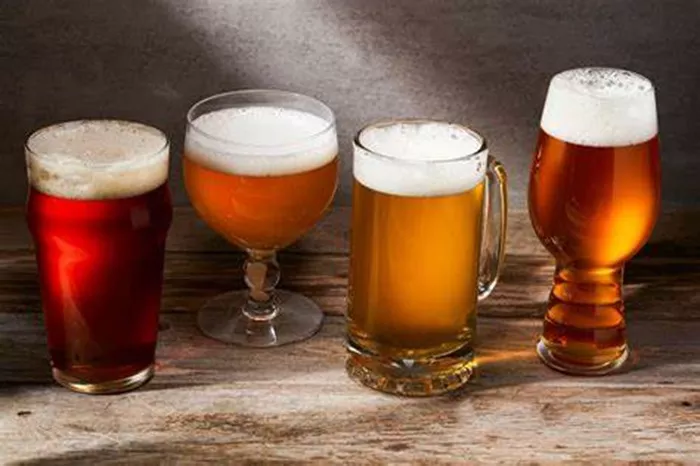Beer is one of the oldest and most widely consumed alcoholic beverages in the world. From small craft breweries to large industrial beer manufacturers, every brewer places significant importance on one key aspect of their product: shelf life.
The shelf life of beer refers to how long it remains fresh, flavorful, and safe to drink before its quality starts to deteriorate. Unlike wine, which can improve with age, most beers are best enjoyed fresh. However, various factors, including brewing methods, ingredients, storage conditions, and packaging, can impact how long a beer stays at its best.
Understanding beer shelf life is essential for consumers, retailers, and brewers alike. Proper knowledge ensures that beer is stored and consumed in its optimal condition, preventing waste and maintaining the intended taste profile.
In this article, we will explore the key elements that influence beer shelf life, how to identify signs of aging, and the best practices for preserving beer freshness.
The Science Behind Beer Shelf Life
1. What Determines a Beer’s Shelf Life?
Several factors contribute to how long a beer will remain fresh:
Ingredients and Brewing Process: The composition of a beer—including hops, malt, yeast, and water—plays a crucial role in determining how long it will last. Beers with higher alcohol content, strong hop presence, or dark malts tend to have a longer shelf life.
Packaging and Oxygen Exposure: Oxygen is a beer’s worst enemy. Too much oxygen exposure leads to oxidation, which results in stale flavors. Packaging methods such as canning and bottle conditioning influence how much oxygen the beer absorbs over time.
Storage Temperature and Light Exposure: Heat and UV light accelerate chemical reactions in beer, leading to spoilage. Proper storage at cool temperatures and away from direct sunlight extends a beer’s lifespan.
2. Pasteurization and Its Impact on Longevity
Some commercial beers undergo pasteurization—a process that heats beer to kill bacteria and prolong its shelf life. Pasteurized beers generally last longer than unpasteurized beers, which are more susceptible to spoilage.
How Long Does Different Beer Styles Last?
1. The Lifespan of Different Beer Categories
Different beer styles age at varying rates due to their ingredients, alcohol content, and brewing techniques. Here’s a general guideline for how long various beers remain fresh:
- Light Lagers & Pilsners: 3-6 months (short shelf life due to low alcohol and hop content)
- IPAs (India Pale Ales): 2-4 months (hop flavors degrade quickly)
- Stouts & Porters: 6-12 months (higher malt content provides stability)
- Belgian Ales & Sours: 1-3 years (wild yeast and high acidity allow for extended aging)
- Barleywines & Imperial Stouts: 3-10+ years (high alcohol and complex malt profiles enable aging)
2. Does Beer Expire? Understanding Best Before vs. Expiration Dates
Beer typically has a “best before” date rather than a strict expiration date. This means that while beer might lose its peak freshness over time, it doesn’t necessarily become unsafe to drink. However, flavors can deteriorate, and undesirable characteristics may develop past its prime.
The Effects of Aging on Beer Quality
1. How Beer Changes Over Time
Aging beer results in noticeable changes to its sensory properties:
- Flavor Shift: Fresh beers, especially hoppy varieties, lose their bright, citrusy notes over time, while malt-heavy beers may develop caramel or oxidized flavors.
- Aroma Reduction: Hop-forward beers experience significant aroma loss, whereas darker, strong beers may gain sherry-like or toffee notes.
- Carbonation Decline: Beer that’s aged too long may become flat, impacting its mouthfeel and drinkability.
2. When Does Aged Beer Become Undrinkable?
Certain off-flavors and changes indicate that a beer has passed its optimal consumption period:
- Wet Cardboard or Sherry-like Flavors: A sign of oxidation.
- Sour or Vinegary Taste: Potential bacterial contamination.
- Skunky Aroma: Exposure to UV light has altered hop compounds.
Best Practices for Storing Beer and Extending Shelf Life
1. Optimal Storage Conditions
To maximize a beer’s shelf life, proper storage is essential:
- Temperature Control: Store beer between 45-55°F (7-13°C). Warmer temperatures accelerate aging, while excessively cold storage can mute flavors.
- Avoid Light Exposure: UV rays break down hop compounds, leading to skunky flavors. Dark glass bottles or cans provide better protection.
- Minimize Oxygen Contact: Oxygen can rapidly degrade beer, so ensure bottles and cans are sealed properly.
2. Should Beer Be Stored in a Fridge or Cellar?
- Refrigeration: Ideal for hoppy beers (IPAs, pale ales, lagers) to preserve freshness.
- Cellaring: Suitable for high-alcohol and malt-forward beers like barleywines and imperial stouts, allowing for controlled aging.
Conclusion
Beer shelf life is influenced by numerous factors, including ingredients, brewing methods, storage conditions, and packaging. While many beers are best consumed fresh, some styles can develop unique flavors when aged correctly.
By understanding beer shelf life, consumers can make informed decisions about how to store and enjoy their favorite brews while minimizing waste. Whether you prefer crisp lagers or bold stouts, knowing when a beer is at its peak ensures the best drinking experience.
Next time you pick up a beer, take note of its style, packaging, and storage conditions—because freshness matters.
You Might Be Interested In:


